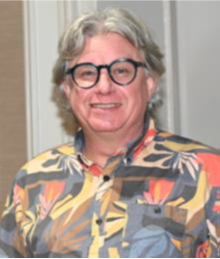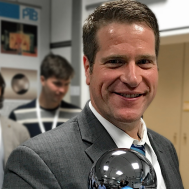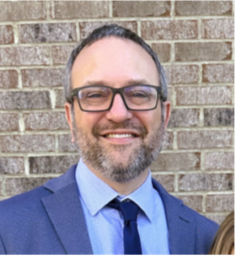(A) Flexure Mechanism Design
Flexure mechanisms are widely used in precision motion control and alignment applications including lithography, metrology, telescope mirror positioning, and medical devices. They offer frictionless, zero play, limited hysteresis, and contaminant-free motion over travel ranges from nanometers to millimeters. Designing flexures needs consideration of volume, dynamics, lifetime, stresses in the flexural elements, travel range, parasitic motion, and load capacity. Therefore, the design process requires a broad range of design and analysis approaches to ensure its functionality.
This tutorial covers:
- Fundamental design equations for notch and leaf-based flexure joints.
- Constructing mechanisms by combining these joints and rigid links in series or parallel to form kinematic chains.
- Strategies to mitigate parasitic arcuate motion (foreshortening) and center shift of pivots.
- A comprehensive classification of flexures by degrees of freedom.
- Mobility assessment using Grübler’s equation to identify optimal designs by balancing constraints and freedoms with case studies to illustrate its practical application.
- Integration of flexure mechanisms with various types of actuators and sensors.
- Damage assessment (number of cycles to failure).
- Manufacturing methods and assembly techniques.
Stuart Smith
Stuart Smith has been working in engineering for 48 years. He is now a Professor of Mechanical Engineering in the Center for Precision Metrology at UNC Charlotte. Throughout the years his major focus has been the development of machines, instrumentation, and sensor technologies primarily aimed towards the challenges of atomic scale discrimination and modifications. This work has resulted in the formation of four manufacturing companies, twenty patents, over a hundred journal publications, and the (co)authorship of five books.

Kumar Arumugam
Kumar Arumugam is a researcher at the National Institute of Standards and Technology working on mass and force metrology using electrostatic and electromagnetic instruments. He earned his Ph.D. from the Center for Precision Metrology, UNC Charlotte in 2021, where he built and characterized optical and stylus-based surface profiling instruments.

(B) Spindle Metrology
This tutorial continues in the longstanding tradition of Axes of Rotation tutorials previously offered at ASPE by Dr. Eric Marsh and the late James Bryan. A copy of Eric Marsh’s seminal book, Precision Spindle Metrology, will be provided to pre-registered attendees.
This tutorial covers:
We will cover all of the major concepts in Dr. Marsh’s book including: 1) explanations and examples of the error motion, stiffness, and thermal growth of precision spindles; 2) terminology for defining the behavior of spindles used in instruments, measuring machines, machine tools, and rotating equipment of all kinds; 3) instrumentation available for measuring the various parameters of spindle performance.
A special demonstration of a commercially available Lion Precision spindle error analyzer will help reinforce the concepts. Many of the precision spindle metrology principles are illustrated through case studies taken from the Professional Instruments vault. In addition, some emerging topics of spindle metrology, such as speed stability and simultaneous multiple fixed sensitive directions not covered in the book, will be introduced.
Byron Knapp
Byron Knapp has over twenty years of experience in the design and development of precision manufacturing systems and precision machine design. He received his BS, MS and PhD degrees in Mechanical Engineering at The Pennsylvania State University under Professor Eric R. Marsh. Byron has been a Senior Engineer at Professional Instruments Company for 16 years where his focus has been on air bearing spindle characterization using finite element and modal analysis, nanometer-level spindle metrology, and occasional forays into oil hydrostatic spindle testing. Byron is an active member of the international precision engineering communities of ASPE and euspen.

(C) Precision Design Principles
This tutorial covers:
- Engineering Design and Determinism
- Bearings
- Errors and Error Budgets
- Exact Constraint Design
- Structural Design, Loops, and Material Selection
- Actuators
- Feedback Devices
- Manufacturing for Precision
- Environmental Control
Ronnie Fesperman
Ronnie has 25 years of experience as a Precision Engineer designing, developing, and evaluating the performance of precision machines, instrumentation, and manufacturing processes. He has gained extensive experience in engineering analyses, mechanical element and mechanism design, and machine tool metrology. After graduating from UNCC’s Precision Metrology Program, he worked for leaders in precision such as Moore Tool, NIST, US Conec & Corning and he has personally designed many 3- to 5-axis CNC machine tools. As an entrepreneur, he founded and now leads Precision Mindset and PrecisionX Systems. With a passion to share his knowledge and experience, he has taught Precision Mechanical Design at JHU for the past 14 years.

(D) Motion Control Fundamentals
This tutorial presents key principles for the design and implementation of control systems for precision machines, as well as the interaction of these controllers with the chosen system hardware.
This tutorial covers:
- PID control: physical meaning of PID feedback control, anti-windup, PID tuning, and the limitations of PID as a controller form.
- Loop shaping design: lead and lag compensation, system identification using a dynamic analyzer to measure loop shaping performance with hardware demo.
- Hardware-control interaction: the effects of moving mass, machine stiffness and damping on control performance, the effects and modeling of quantization and noise. Case studies provide context.
- Control for MIMO system: decoupling and re-coupling.
- Basic feedforward, motion trajectory generation, input shaping.
- Over-actuation, control architecture of dual-stage motion system.
Lei Zhou
Dr. Lei Zhou is an Assistant Professor jointed appointed in the ME and ECE departments at the University of Wisconsin-Madison, and serves as an Associate Director of the Wisconsin Electric Machines and Power Electronics Consortium. She received her Ph.D. in Mechanical Engineering from the Massachusetts Institute of Technology (MIT) in 2019 under the supervision of Prof. David Trumper. Her research interests include the design and control of high-performance electromechanical systems, magnetically levitated positioning systems, actuators for robots.


